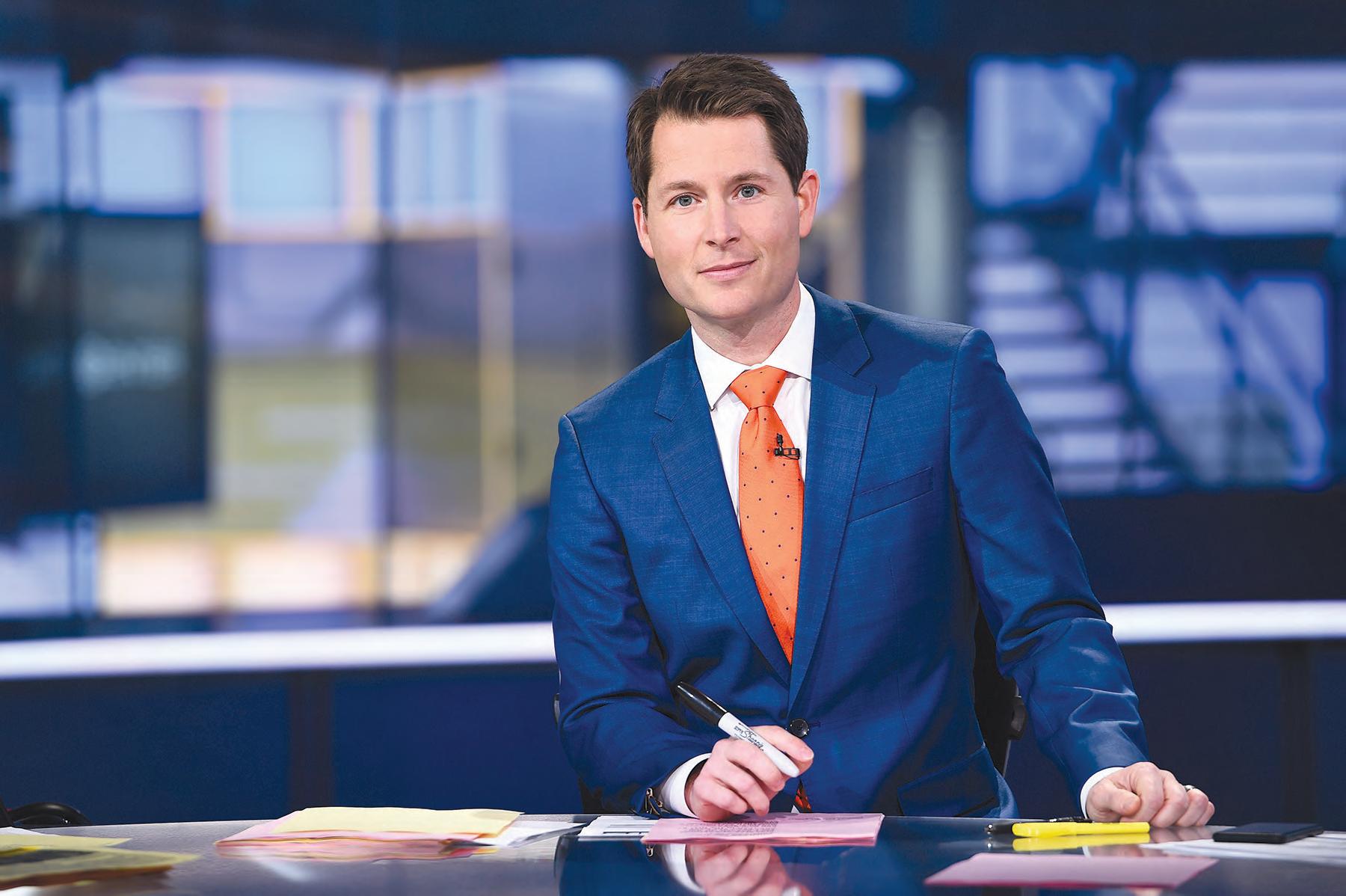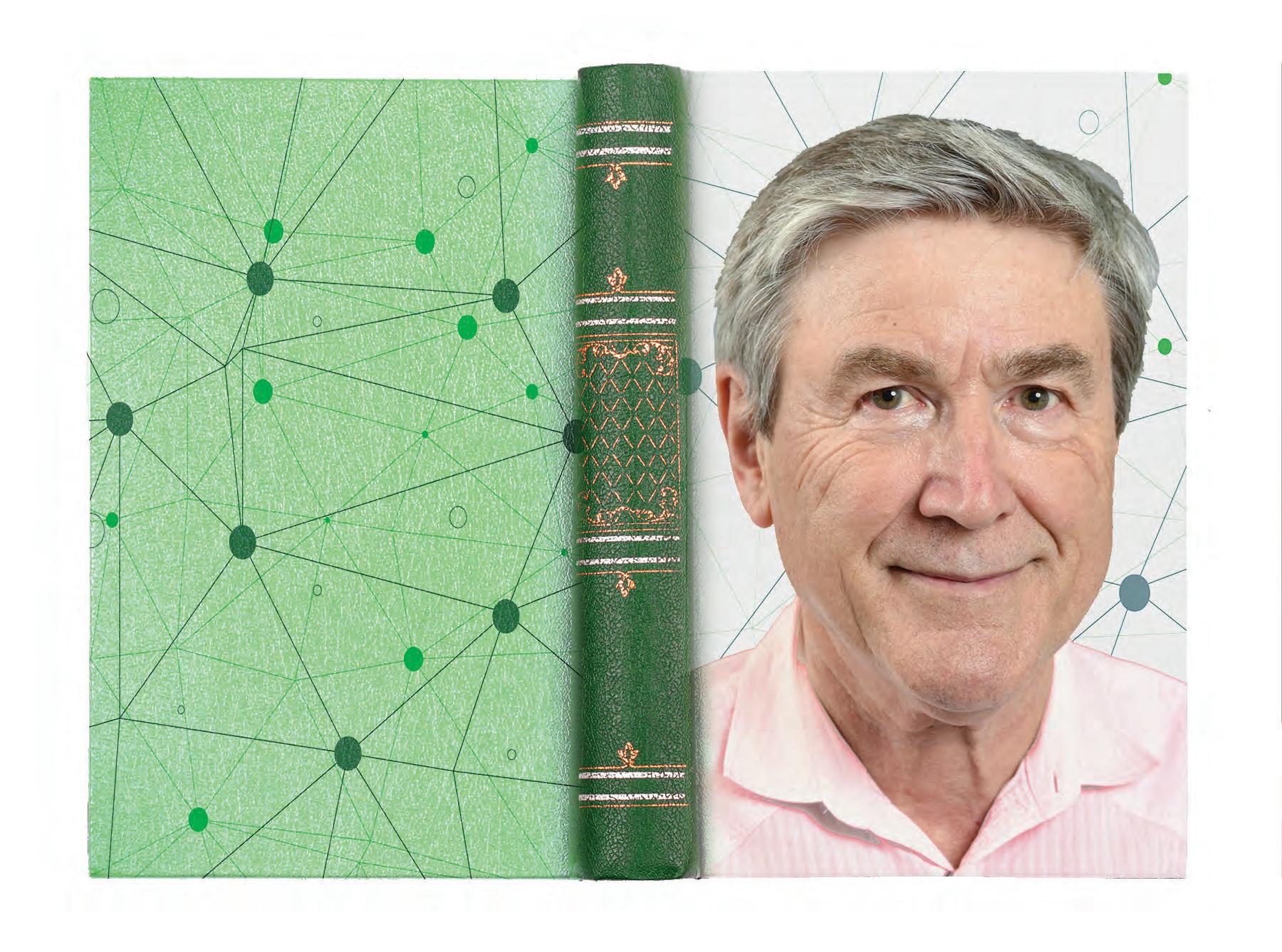VOICES BYERLY
ASU REGENTS PROFESSOR WINS PRIZE FOR ‘THE DEMON IN THE MACHINE’
ON ILLUSTRATI
• CHRISTY
LAURA LATZKO • COLLEGE TIMES
PHOTO COURTESY OF PAUL DAVIES
Paul Davies’ book “The Demon in the Machine: How Hidden Webs of Information Are Solving the Mystery of Life” was recently honored as Physic World’s Book of the Year.
O
ver his career, ASU Regents Professor Paul Davies has produced work that has spawned conversation. His latest book, “The Demon in the Machine: How Hidden Webs of Information are Solving the Mystery of Life,” has been recognized for its contributions to the field of physics. Recently, the book was named Physics World’s Book of the Year, an honor given to well-written books that are of scientific interest to the physics community. His tome was chosen out of a field of more than 40 books, which were reviewed throughout the year. Produced by the Institute of Physics, Physics World has been giving out the award since 2009. Davies says that the honor is special to him. “To receive that accolade from the physics community means a great deal to me because that is my community. I’m by profession a theoretical physicist, so they are my people,” Davies says. The book looks at topics such as information patterns and pathways in gene networks. “What I wanted to get across is if we treat information as a physical variable, not just as an everyday discourse, but as a real quantity connecting to the laws of physics, that will open the way to explaining the extraordinary nature of living matter,” Davies says.
He likens his research to understanding how a computer program works, not through hardware but instead through software and coding. He says these ideas on informational patterns can be applied to fields such as cancer research. “My hope is that we can reengineer, reboot, restore or reinstall the operating system, or whatever language that one prefers, to try to normalize cancer cells,” Davies says. The book also delves into larger concepts such as consciousness and the emergence and nature of life. “These are really deep questions. It’s not just a matter of some technical aspect of science. It touches on things like, ‘What does it mean to be human?’ ‘What does it mean to be living?’ ‘Is there life elsewhere in the universe?’” Davies says. Although the book was written for others in the scientific community, it can help give people in other fields a better understanding of the research’s importance. “These are things that profoundly affect our understanding of who we are and how we fit into the great cosmic scheme,” says Davies, about his first book in 10 years. The book was written in two and a half years, mostly in Sydney, Australia, where he spends part of
6 ECOLLEGETIMES.COM | MARCH 2020
the year. Davies has published 31 books throughout his career and traveled to different parts of the world. His previous books have focused on cosmology, astrophysics, time travel, quantum physics, the search for extraterrestrial life and God. He is the recipient of the Glaxo Science Writers Fellowship, the Royal Society’s Michael Faraday Prize, the Templeton Prize, the Institute of Physics’ Kelvin Medal, the Bicentenary Medal of Chile, a University College London honorary fellowship and three honorary doctorates. A London native, Davies taught in England and Australia before coming to ASU in 2006. Davies is the director of ASU’s Beyond: Center for Fundamental Concepts in Science, co-director of the Cosmology Institute at ASU and a member of the Order of Australia conferred by Queen Elizabeth. He developed an interest in exploring larger ideas such as “what is life” as a college student. Many of his ideas have been developed over the last seven to eight years through his research with his colleague Sara Walker at Beyond: Center for Fundamental Concepts in Science. In this research, he used computer modules to apply theoretical physics concepts to an organism. “It’s really computer modeling,
applying information theory and complexity theory to work out models of gene networks and metabolic networks,” Davies says. One important idea he discovered, which he explores in his book, is how the different sciences are converging and can be applied together in the quest for greater knowledge. “What we are witnessing is a whole new scientific revolution where the traditional subject areas like physics, chemistry, biology and computers, they are breaking down. We are now in a realm where those subjects meet, where nanotechnology and quantum technology meet biotechnology, complexity theory and information theory,” Davies says. Although he specializes in theoretical physics, his work takes him to other scientific areas. He says this is true with many of his colleagues at ASU. “This is an ideal environment at ASU to cross those subject boundaries. I’m witnessing this every day. It is wonderfully exciting that we don’t have to remain in these silos. Progress is usually made when subjects intersect and very often when they clash. Out of that clash or that inconsistency, new ideas spring,” Davies says. Info: cosmos.asu.edu CT









